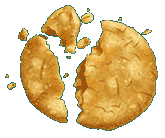ANIMAL WELFARE
The donkey – a miracle creature. From beast of burden to faithful companion

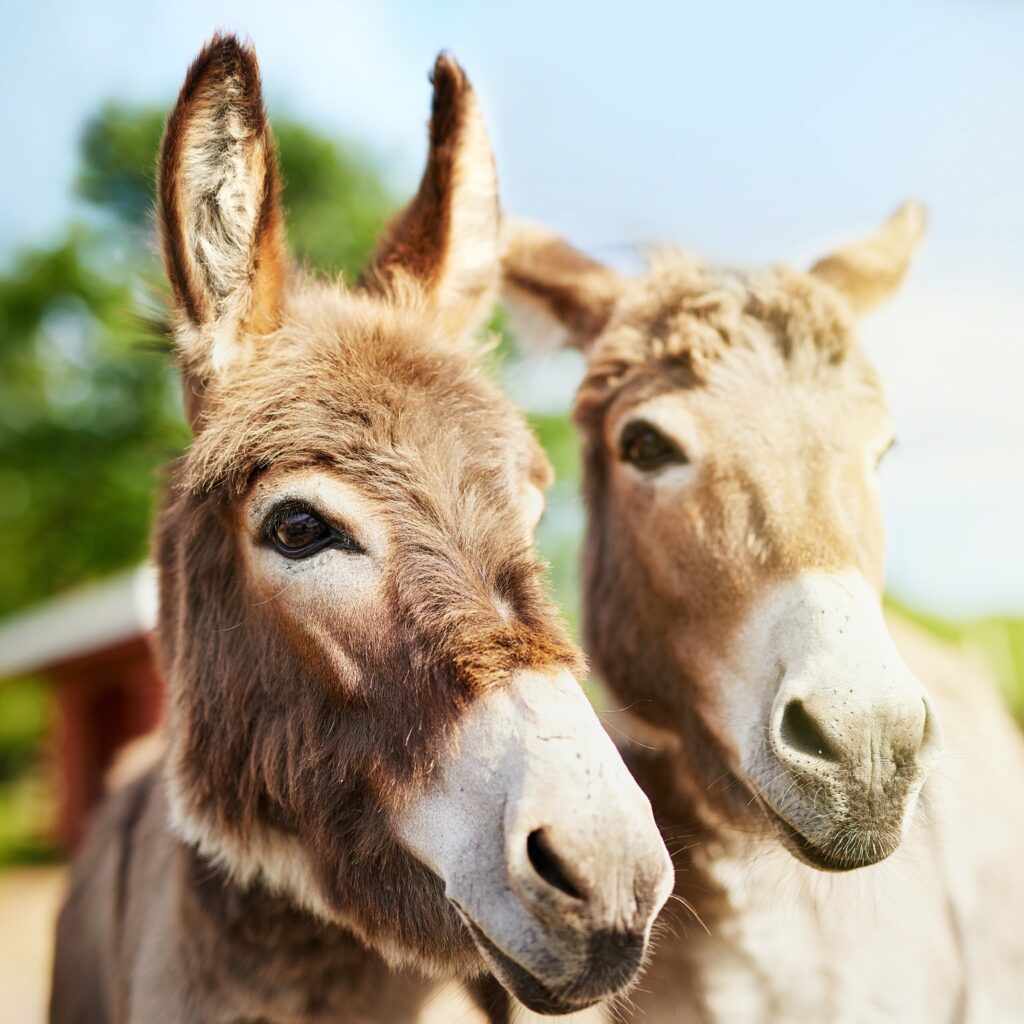
How cutely she wiggles her long ears and gazes longingly at the carrot I give her … There is something almost meditative about watching Ronja the Donkey munching on it. Donkeys exude an incredible calm. Stroking and grooming them is just as relaxing, and the feeling of well-being this generates is probably mutual. The closer you get to these grey animals (although they are not all grey!), the more you have to love them. Here are some key facts about donkeys and their long, and not always happy, history as human companions. It is their clever and social nature that amazes and fascinates, because they are definitely characters… This also includes „my“ donkey, who has had enough of being rubbed and stroked and has now gone off on her own…
The wild donkey – still around today
Donkeys are not horses, and this is something you quickly notice. But they do belong to the so-called „equidae“ family. Wild donkeys used to live mainly in the steppes of Africa and the Middle East, and there are several subspecies. Interestingly, the Asian wild donkey has never been domesticated and can still be found in Asia and Africa. Its habitat there is particularly barren, such as stone deserts. As a result, its digestive system remains adapted to the scarce food that can be found there. In the wild, wild donkeys feed mainly on grasses.
Today, the wild donkey is threatened with extinction. For example, the Somali wild donkey, once widespread throughout North Africa, is now only found in Eritrea and the Ethiopian desert. The Anatolian and Syrian wild donkey became extinct at the beginning of the 20th century, having become a sought-after hunting target, especially during World War I, when the newly emerging automobile made it easier to reach the deserts than had previously been the case with camels. Where they still exist, wild donkeys are characterised by their slender build. They are more long-legged but also smaller than the domestic donkey. The wild donkey’s coat is usually grey to sand-coloured or brown (whereas domesticated donkeys have black, reddish and piebald coats). Its ears are also longer. Wild donkeys are naturally more timid than their domesticated cousins. They tend to form herds, but can also be found as solitary animals. The domestic donkey is descended from the African donkey, probably the Nubian donkey in particular. Feral domestic donkeys are also sometimes called „wild donkeys“. ‚Wild‘ certainly applies to the ones I’ve gotten to know, depending on their mood at the time. And when donkeys get a whiff of fresh grass, they are unstoppable.
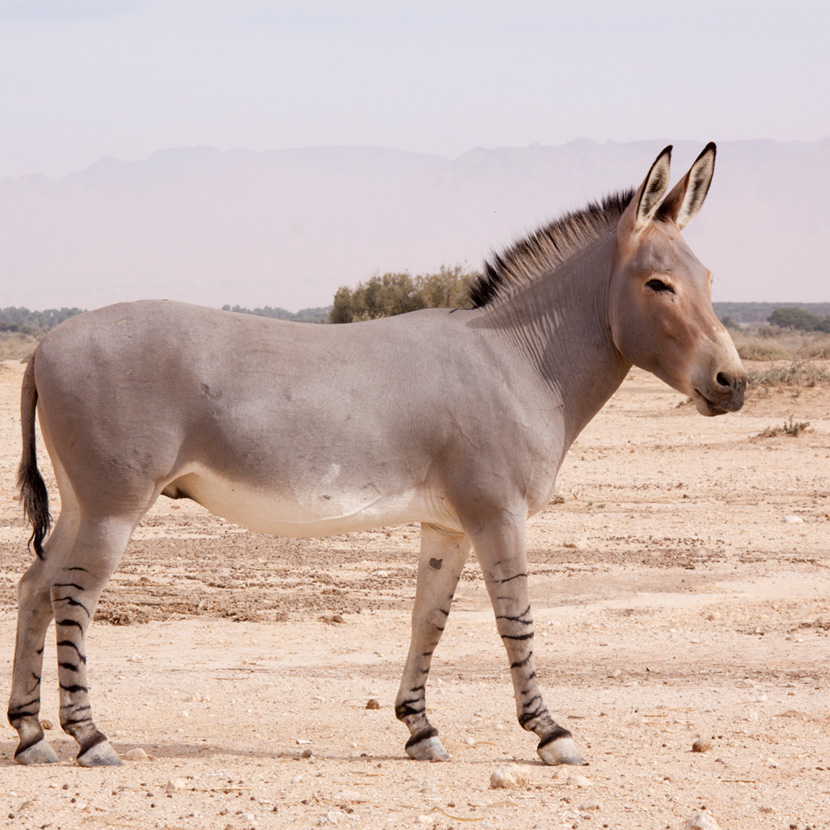
Their hardworking history as riding, draught and pack animals
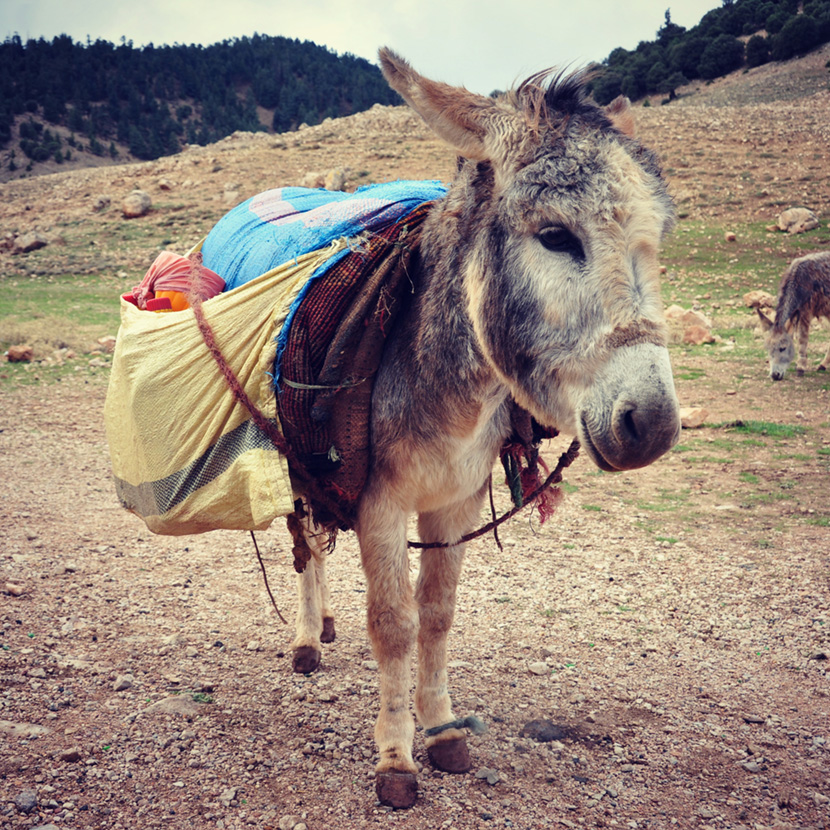
Donkeys have been with mankind for a long time. For about 5000 years, in fact. Until recently, however, theirs was a „dog’s life“ – or rather, a tedious and labour-intensive „donkey’s life“. Donkeys were originally used as mounts and to pull carts and ploughs. They were later replaced by horses. But they continued to be used as pack animals, some of them to this day. Yet, their relationship with humans began with the donkey being highly respected: In early Mesopotamia, donkeys were even considered sacred. In both the Bible and the Koran, the donkey is used as a mount: Joseph and his brothers ride on donkeys into Egypt, and Jesus rides a donkey into Jerusalem. But the donkey was probably no longer truly holy by then. Because of its patience and toughness, as well as its ability to survive on little water and food – far less than horses – it was popular as a pack animal and also a mount, especially in arid regions and poor societies. It was the Romans who first harnessed them (literally) as working animals, thus, donkeys only appeared north of the Alps from the Roman era onwards. Donkeys were also kept in mills to carry sacks of grain or to drive the mill wheels. And because donkeys, unlike horses, do not get dizzy and are very sure-footed, they were also preferred for travelling in steep, impassable mountain districts. In Germany, donkeys don’t usually have to work as hard. But they’re often neglected because they’re not very demanding and you often don’t know when they’re sick. The only things that help are education and empathy for these creatures.
Donkeys are not sausages
The fact that in the past, in poor parts of the world, all farm animals were processed for meat is one thing. But it’s another that even today, for example in Italy and parts of southern France as well as in some regions of Asia, donkey sausage or donkey meat is still considered a ‚delicacy‘. For us, donkeys are marvellous creatures, not meat. Another problem that is killing off the wild donkey today is the use of donkey skin in traditional Chinese medicine, where demand is increasing rather than decreasing. These classic remedies may be tried and tested, but is it still really necessary in this day and age to use donkey skin, at least in our part of the world? Donkey skin has also traditionally been used to make leather. Fortunately, many people today think differently and love to try out imitation leather made from ever-new materials as the ultimate fashion statement. After all, donkey milk also used to be sought after and was considered a beauty product. Cleopatra according to legend bathed in donkey’s milk, however there is no proof that she ever did this. Donkey milk nevertheless is still occasionally found as an ingredient in cosmetics and soaps. We just prefer donkeys to be alive and well and living in a natural, suitable environment.
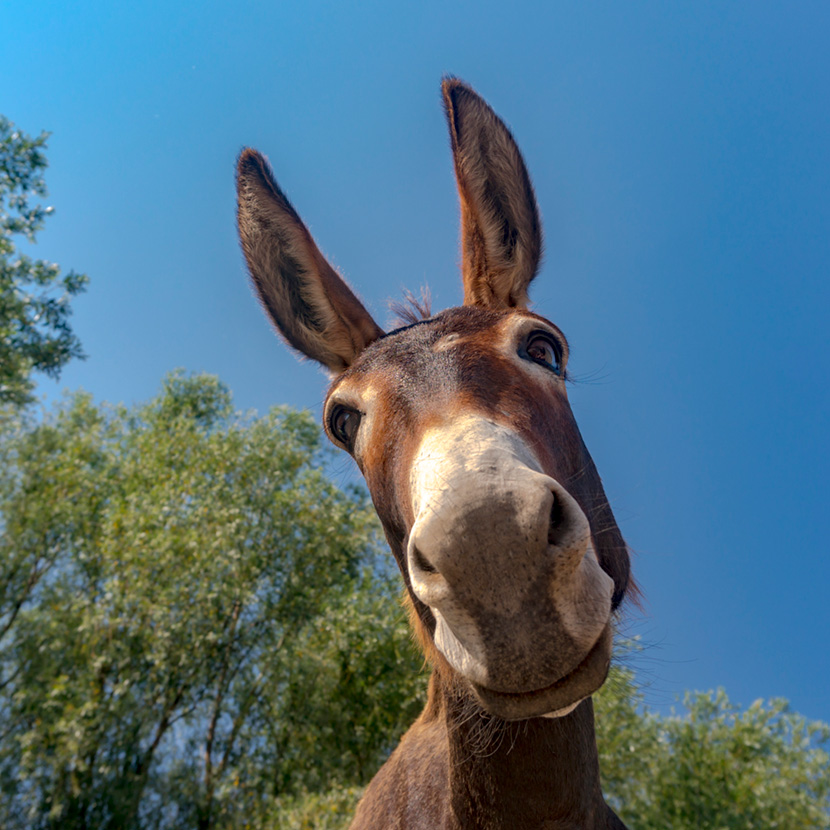
Stubborn head, cuddly type
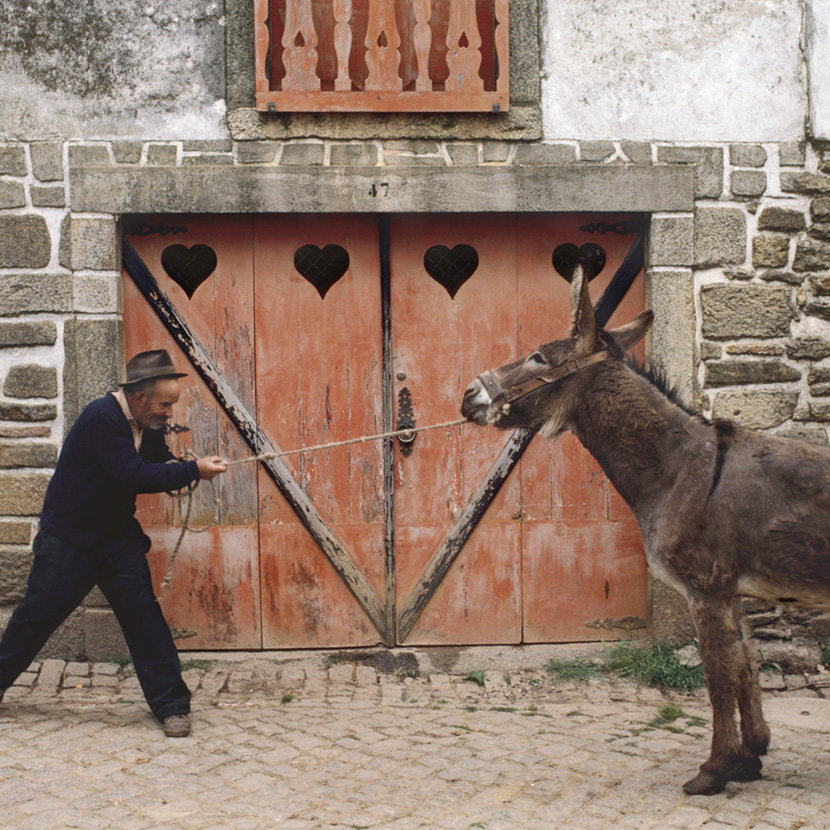
From time to time, we’ll say of someone: „They’re as stubborn as a donkey!“ And there is something to this: Donkeys can be very stubborn. But there is often a very good reason for this stubbornness. When riding a donkey, it can sometimes drive you to despair by simply refusing to move – and no amount of talking or scolding will change anything. Especially when in danger, a donkey becomes stubborn instead of running away like a horse. This difference in behaviour can be explained by the fact that donkeys, unlike horses, are not flight animals. They are not particularly fast runners. Their strategy, or rather their instinct in dangerous situations, is based on stopping to assess the situation. Depending on how they assess the danger, a donkey can still flee, or it can simply sit out the situation – a very wise way in which to act. In fact, we can all learn from this method: Wait and see. Don’t panic. Be patient. Act carefully.
On the other hand, donkeys are also considered to be very gentle and friendly. They like to rub up against you and are not averse to being cuddled. Today, we humans make use of their calm, gentle nature in animal-assisted therapy and donkey trekking. Of course, the question remains as to whether animals need a „job“. It may be necessary to consider on a case-by-case basis how the animals, in this case the donkeys, are coping. And then, as so often, it depends on the HOW. What are the animals‘ living conditions? Is their interaction as free and respectful as possible? Specifically, is there enough room for both the ’stubborn‘ and cuddly side of the donkey?
So sociable – and so peaceful!
Domestic donkeys in particular are extremely friendly and form close bonds with each other. They are very reluctant to be alone. They seek physical contact and closeness with other donkeys and often also with humans. It is not uncommon for donkeys to be „best buddies“ and to hang out with each other almost all the time. They even share their food. Such donkey pairs often react to separation by becoming depressed and calling out loudly for each other. As wild donkeys, they live in so-called ‚mother groups‘, which include a donkey mare and her female offspring. There are also bachelor groups. As donkeys are extremely social animals, it is torture for them to be kept alone. A herd also gives them security. It is wonderful to watch them groom each other and nibble at each other, sometimes tenderly, sometimes scratchingly.
Donkeys are like rocks in the sea – they just radiate calm. This wonderful quality is not only used by humans in the above-mentioned and increasingly popular donkey therapies, but also among the animals themselves, i.e. with animals of other species: the company of a donkey can calm nervous animals since they seem to radiate trust.
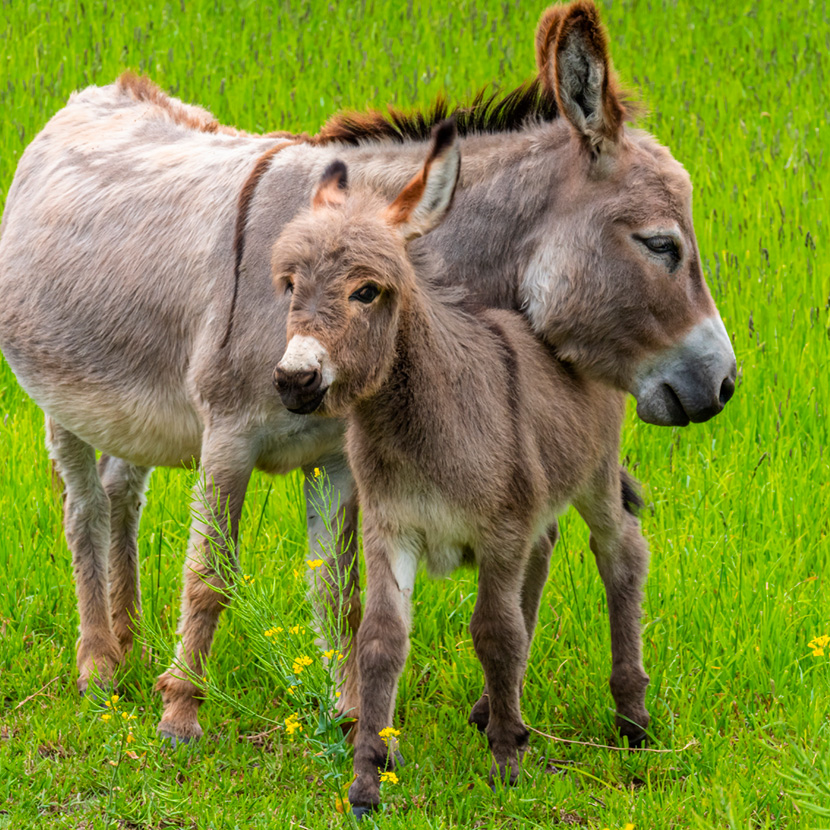
Donkey-style communication
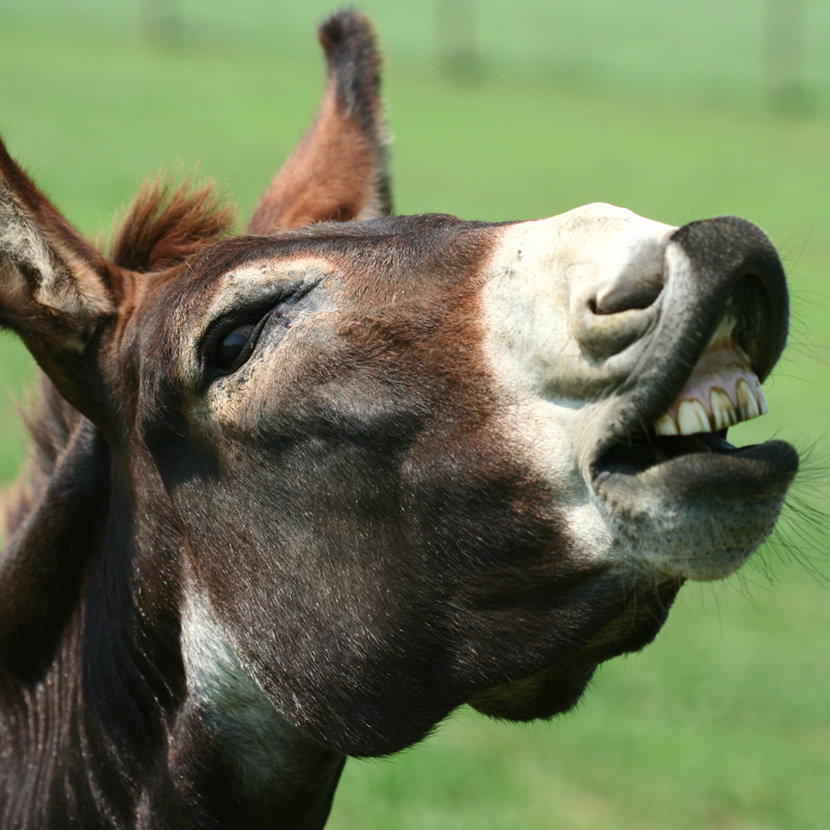
As well as their distinctive braying, which can be heard for miles around, donkeys have a whole range of other ways of expressing themselves. They recognise each other by their sounds and communicate with facial expressions, body language and scents from their droppings. It is amusing to watch two donkeys meet and sometimes blow gently in the direction of each other’s noses, which again is probably a form of communication. But much like dogs, you can also read their mood from the position of their heads and tails. They have been found to be able to interpret the intentions of others, including humans, and react accordingly. They also use their braying to demand attention and food. It is therefore a good idea to give a donkey a small snack each evening to prevent it from calling out for food in the night.
Donkey language is all about the sense of smell. You can see how this works when they raise their heads to the sky and show their teeth by lifting their upper lip and „wrinkling“ their noses. This is called the flehmen response. It is a behaviour they share with horses, and it allows them to smell in a more nuanced way. What is edible and, more importantly, where is the best source of food? Is something or someone a friend or foe? Or even a mating partner? The donkey’s fine nose reveals all sorts of things. Donkey communication is therefore very complex, and once again, the animals are astonishing in every way.
Intelligent, curious, playful
Just their ability to communicate – and their curious nature – is a clear sign of intelligence (perhaps not only for our four-legged friends ;-). Donkeys also have an excellent memory. They remember their fellow donkeys and former habitats for a long time, even after they have been separated from them. Science attributes them with a memory span of 25 years. Their calm demeanour is also interpreted as another sign of intelligence. They are curious about many things, and they love to nibble on most of them—so make sure to secure anything that shouldn’t end up as a snack in a donkey’s stomach, such as flower decorations or straw hats. Their mischievous nature suggests a sense of playfulness and humour. Could this be why in German the word ‚Eselei‘ (donkey-play) exists? At all events, donkeys should not be accused of stupidity. Donkeys (like horses) can recognise obstacles and avoid them. It has been found that they can do this as well as humans and better than dogs. However, this isn’t an intelligence ranking. It just means that donkeys, like many other animals, have long been underestimated by us. Instead, we should be amazed by them.
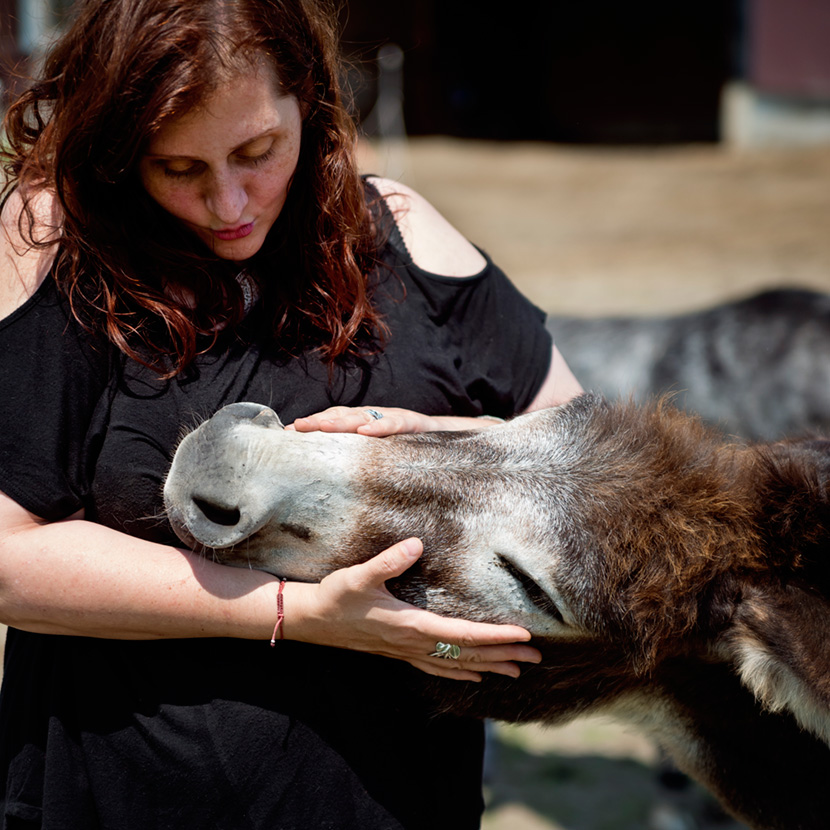
11 fascinating facts about donkeys
1. Stubbornness has the upper hand! As we have heard, unlike horses, donkeys are not flight animals: their strength lies in their calm, stoic and thoughtful intelligence.
2. Just no wet fur! Donkeys do not like to get wet. This shows that they originally come from very dry areas and that their coat is not made for much moisture. It is to all intents and purposes not waterproof, so they always need a shelter to protect them from the rain. Their hooves are also sensitive, so they should not stand on damp ground for long.
3. Favourite pastime: rolling around. Rolling on the ground is a grooming technique for donkeys and one of their favourite activities. You can make them very happy by providing them with places in which to roll around.
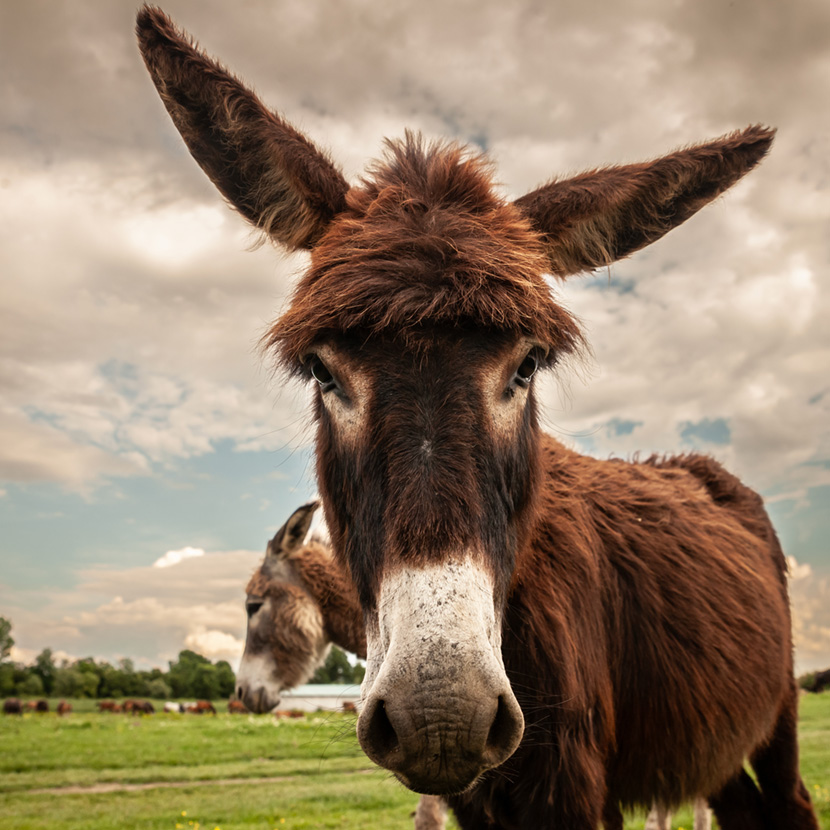
4. Symbolic animals. Do you know what the donkey represents? In Greek and Roman mythology, the donkey is a symbol of fertility. In Christianity, it is an animal of peace – as we have already heard, a sacred and devoted mount, among others of the Christian peacemaker.
5. Domestic donkeys can live up to 40 years. This means that those who wish to keep a donkey as a household or farm companion will be making an almost lifelong commitment. As with all pets, it is important to think carefully before taking one on, therefore.
6. Little sleep. Donkeys only sleep for about three hours and that is standing up. If it is very hot, they may also do this at midday.
7. Long ears hear well. A donkey’s sense of hearing is very good, as is its sense of sight, especially in the dark. We have already learnt that a donkey does a great deal using its nose. Incidentally, donkeys love to be scratched behind their fluffy ears. At least most of the time.

8. Learning to say no from donkeys. If a donkey doesn’t want to do something, it won’t do it – and will stay put. Saying no can be a sign of intelligence. At least if you have a good reason.
9. A diet of grass, thistle and hay. These are a donkey’s staple foods. Its diet is balanced by regular mixing of wild herbs, fruit, vegetables and small pieces of bark. Special treats are apples and the proverbial carrot, held of course in front of its nose. To cover the essential salt requirement, it is advisable to provide a salt lick. And no bread, please! They like it, but if they get too much of it, their stomachs will suffer since it contains too many carbohydrates. Also good to know is that donkeys have quite small stomachs and therefore only tolerate smaller portions. Consequently, they should not have permanent access to pasture, otherwise, they can overeat. After all, green grass is always tempting – as Ronja has repeatedly proven to me!
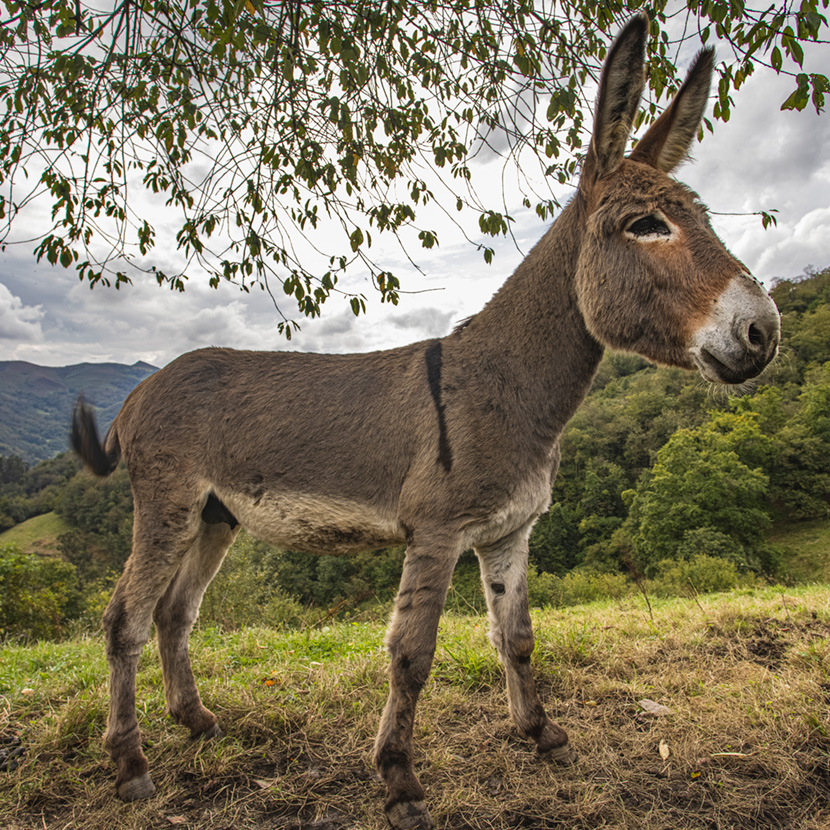
10. Mule or hinny? And what on earth is a zonkey? Horses and donkeys can crossbreed, although not always ideally. If the mother is a donkey and the father is a horse, the offspring is called a mule. If the father is a donkey and the mother a horse on the other hand, the offspring is called a hinny. Colloquially, both mules and hinnies are called „donkeys“. Due to the size differences between the horse and donkey, complications can occur during birth. Moreover, mules and hinnies are generally infertile. In rare cases, crosses between donkeys and zebras also occur, resulting in a zonkey!
11. Why are mnemonics in German called ‚donkey bridges‘? We all know the little sayings that make learning easier for us and aid our thinking skills. In German they are called ‚donkey bridges‘ (Eselsbrücken). But why? Well, donkeys are generally afraid of water, so you had to build bridges for them to cross ditches and streams. These in turn have come to stand as a metaphor for mental bridges.
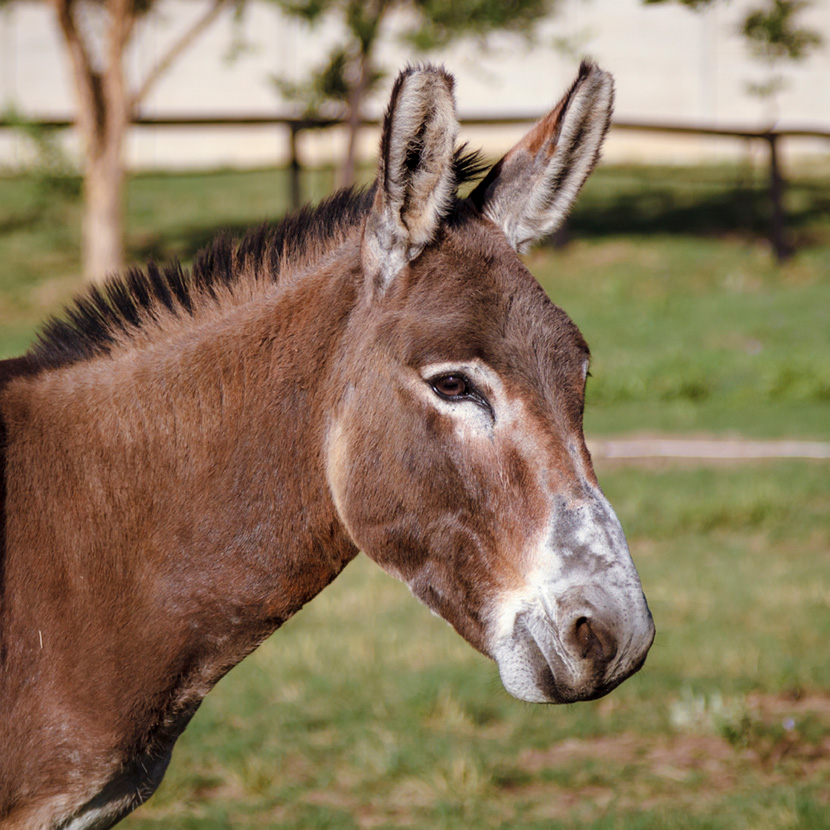
Tourists, walk don’t ride!
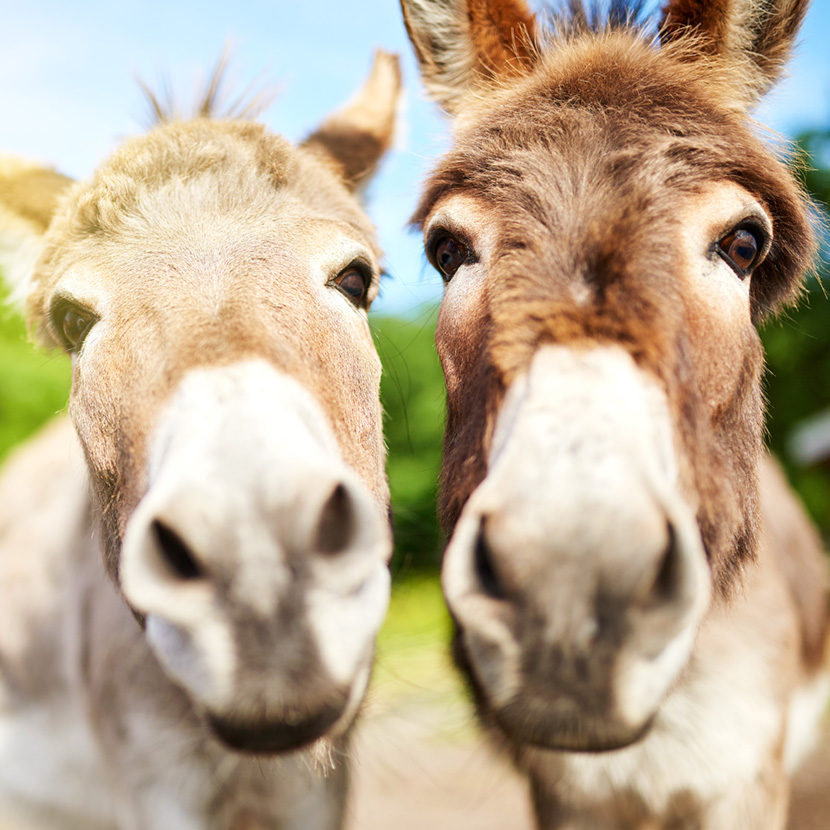
Where donkeys are still kept as working animals, it is certainly helpful to educate people about how they should be kept – and there are projects in Africa that do just this. And, of course, much is a question of poverty. It shows once again how everything in our world is interconnected and how we have a global responsibility. We can certainly influence the way donkeys are treated, because in the tourism industry, donkeys still have to carry tourists on their backs. Let us simply show by our behaviour how we want our fellow animals to be treated. The donkey shows us how: just say no to such offers.
While the horse accompanied man into war, the donkey is associated with peaceful, gentle motifs. Shouldn’t we therefore also be peaceful in our dealings with our grey comrade? Finally, a reminder of the tale of the Bremen Town Musicians. In it, as we all know, it is the donkey who encourages the other animals by saying: „You can find something better than death everywhere.“ So, let’s allow donkeys to live in a dignified and natural way. Instead of being considered merely a farm animal, the donkey could then serve as a wonderful companion.
Since donkeys hide their suffering – another strategy of the wild donkey to avoid signalling weakness to enemies – they are often given loads that are too heavy to carry. A donkey should never carry more than a quarter of its body weight (for horses it is just 10% of their body weight).















